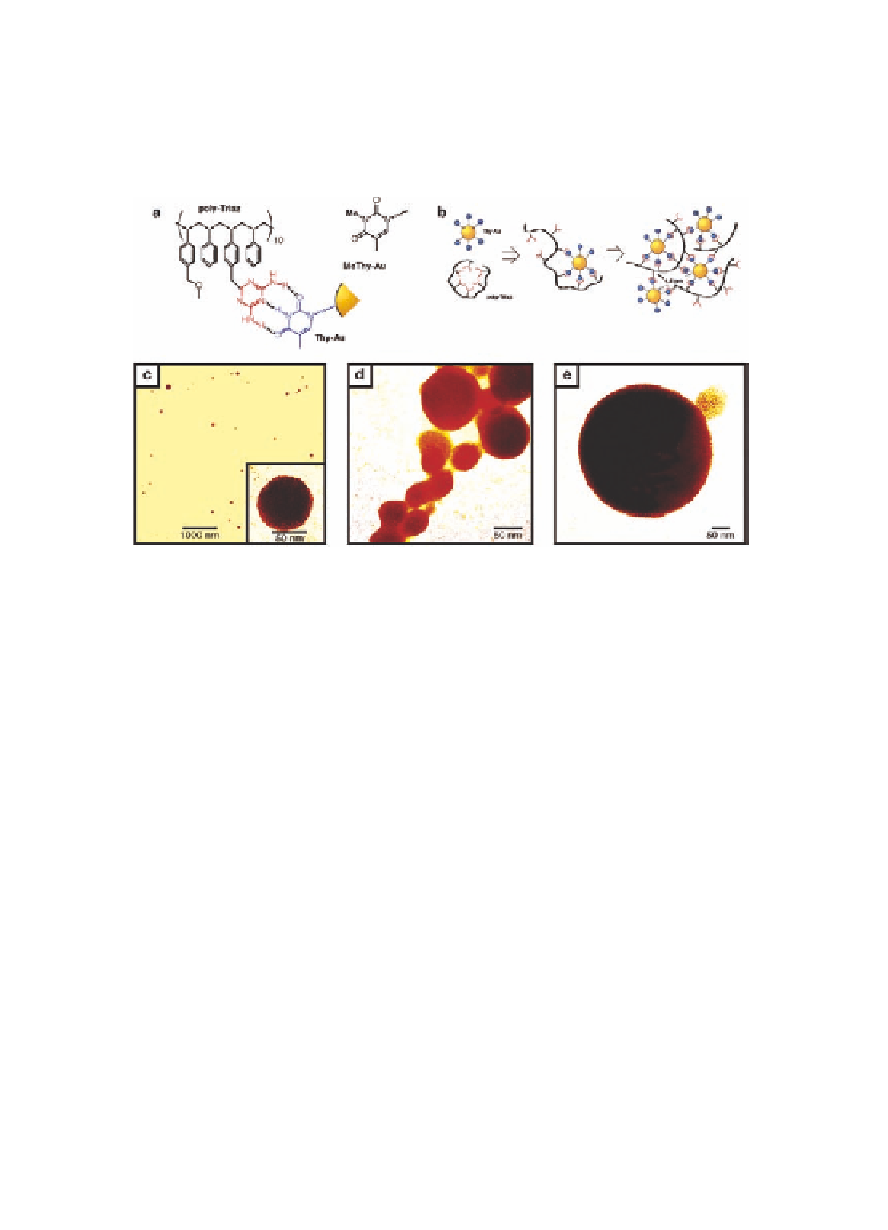Biology Reference
In-Depth Information
is manifested by more efficient recognition processes at lower
temperatures,
44
which are associated with a faster particle growth
rate. Therefore, this size-control phenomenon is consistent with the
prediction of Eq. 13.10: A faster particle growth rate leads to fewer
nuclei and thus larger superparticles.
Figure 13.2
(a) Recognition between a diaminotriazine-functionalized
polymer (poly-Triaz) and a thymine-capped gold nanocrystal
(Thy
−
Au). (b) Suggested mechanism of Thy
−
Au/poly-Triaz
aggregation.
Transmission
electron
microscope
(TEM)
−
images of Thy
Au/poly-Triaz aggregates formed at (c) 23
°
C (inset: representative microsphere), (d) 10
°
C, (e)
−
20
°
C.
From Ref. [43] with permission.
13.3.2
Molecular Mediator-Induced Assembly
Zhong
developed a “mediator-template” approach for making
monodispersed colloidal superparticles from tetraoctylammonium
(TOA)
et al.
functionalized gold nanocrystals (Fig. 13.3). In this approach,
multidentate thioethers such as tetra-[(methylthiol)-methyl]-silane
were used as mediators, TOA molecules were used as templates, and
the synthesis was carried out in a toluene solution.
−
24,28,42
Originally, it was thought that the formation of superparticles
was triggered by the cross-linking of two neighboring particles by
thioether mediators (Fig. 13.3).
However, SAXS data show that
the interparticle edge-to-edge separation distance in the resulting
superparticles is 2.0 nm, which is about four times longer than that
28

Search WWH ::

Custom Search